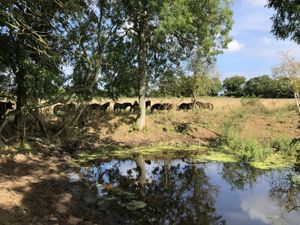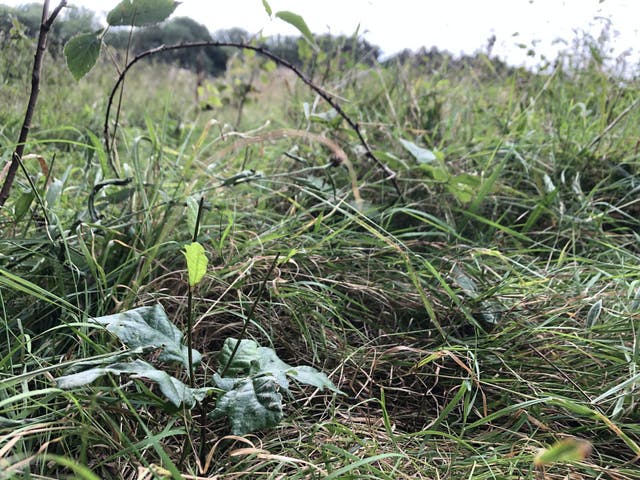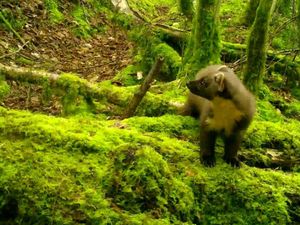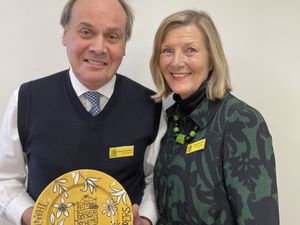Farmers and landowners to bid for funds to ‘rewild’ countryside
Environment Secretary George Eustice is setting out further details of the incentives that are replacing EU farm subsidies.

Farmers and landowners will be able to bid for funding for “rewilding” the countryside, as part of payments for landscape-scale nature schemes.
Up to 15 pilot projects will be awarded funding under the first wave of the “landscape recovery” scheme, which will eventually be worth £800 million a year as part of the programme replacing the EU farming subsidies regime.
Under the scheme, land managers can bid to receive funding for large-scale, long-term projects for establishing woodlands, restoring peatlands, wetlands and other habitats and creating new nature reserves.
The first pilot projects, which could include rewilding schemes that reinstate natural processes in the landscape, will focus on restoring England’s rivers and streams and helping threatened native species recover, officials said.

Successful bids, which will cover landscapes of between 500 and 5,000 hectares (1,200- 12,000 acres), will be chosen by a team of experts over the summer, and are likely to include a mix of different projects.
It is hoped the pilots will create 10,000 hectares (25,000 acres) of restored wildlife habitat – a tiny fraction of England’s farmed land.
They are expected to deliver carbon savings of between 25,000 and 50,000 tonnes a year and improve the status of around half of the most threatened species in England including the curlew, sand lizard and water vole.
Environment Secretary George Eustice will announce at the Oxford Farming Conference on Thursday that applications will shortly open for the first wave of landscape recovery projects.
The scheme is part of the environmental land management payments programme to replace the EU Common Agricultural Policy payments which mostly focused on the amount of land farmed.
There will also be a “local nature recovery” scheme paying farmers to take local action and work together to benefit the environment, through measures such as reducing run-off, curbing flood risk by restoring peat or wetland areas, and adding trees and hedges to fields.
It will be trialled in 2023 with a full rollout across the country from 2024.
The landscape recovery scheme will pay for more radical, long-term, large-scale land use changes and habitat restoration, officials said.
A sustainable farming incentive, which supports environmentally friendly farm practices such as looking after the soil by growing cover crops in the winter, has already been announced.
The three strands of the new scheme are expected to each receive roughly a third share of the £2.4 billion annual Government spending on farm and land management payments by 2028.
The Government said the schemes would help halt the decline in species, restore up to 300,000 hectares of habitat by 2042 and generate carbon savings of six million tonnes a year by the mid 2030s.
Mr Eustice said: “We want to see profitable farming businesses producing nutritious food, underpinning a growing rural economy, where nature is recovering and people have better access to it.
“Through our new schemes, we are going to work with farmers and land managers to halt the decline in species, reduce our greenhouse gas emissions, increase woodland, improve water and air quality and create more space for nature.
“We are building these schemes together, and we are already working with over 3,000 farmers across the sector to test and trial our future approach.
“Farmers will be able to choose which scheme or combination of schemes works best for their business, and we will support them to do so.”
Professor Alastair Driver, director of campaign group Rewilding Britain which works with landowners on rewilding projects, said the landscape recovery proposals were a significant step-change, but urged ministers to “get the details right” by ensuring rewilding was at the heart of the initiative.
“Rewilding marginal and unproductive farmland, and upscaling nature-positive regenerative farming, is a major opportunity to tackle the nature and climate emergencies, while offering opportunities for farmers and rural communities, and ensuring no loss of productive land for growing food,” he said.
Mark Tufnell, president of the Country Land and Business Association (CLA), said both the Local Nature Recovery and Landscape Recovery schemes “have the potential to be transformative and bring England closer towards the Government’s environmental goals”, and showed the wants and needs of farmers and landowners have been heard by Government.
“But this is just the beginning of a highly ambitious and progressive plan. The real work now begins on delivering these schemes successfully,” he warned, calling for more detail on how the transition to new schemes will be carried out.
Craig Bennett, chief executive of The Wildlife Trusts, said: “The real test of this agricultural transition is not so much whether it is a little bit better or moderately better than what came before, but whether it will be enough to deliver on the Government’s targets to get 30% of land managed for nature by 2030, to halt the loss of wild species abundance by 2030, to deliver on the Government’s own 25-year environment plan, and to make sure farmers are supported so that they help solve rather than worsen the nature and climate crises.
“Anything less than that means that this historic opportunity will have been wasted,” he warned.





